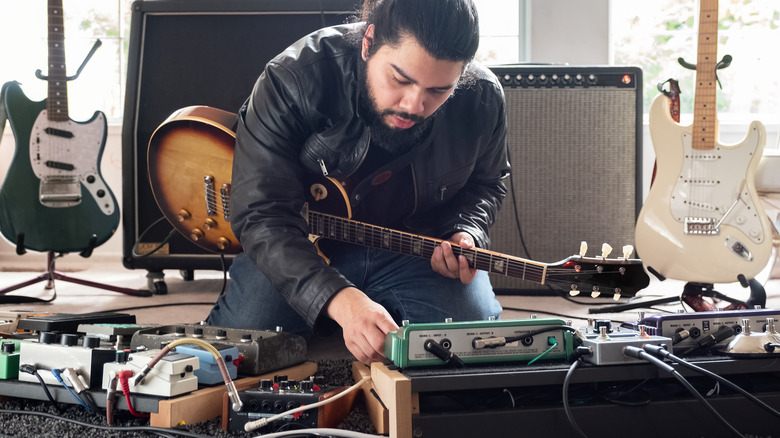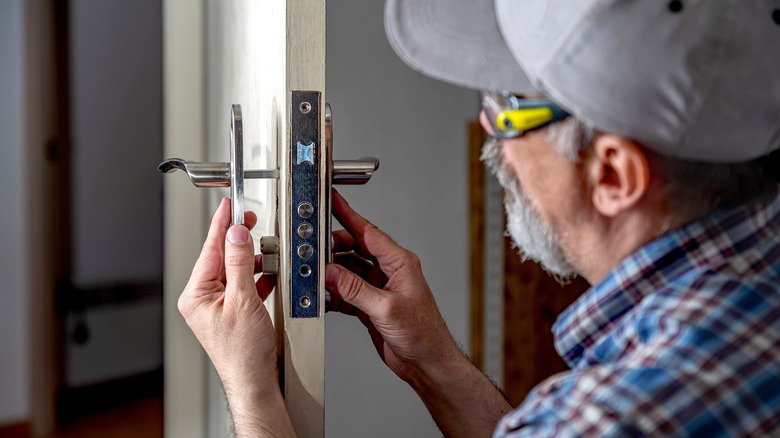How To Soundproof Any Room: Tips For Keeping Your Room Quiet
Gamers, musicians, podcasters, and those who live in noisy neighborhoods will all benefit from soundproofing their space. Sometimes you want to keep noise out; other times you want to keep your noise in. Whatever the case, it's a treasure trove of peacefulness if done right.
With the help of soundproofing materials and a little bit of science, you can insulate your space from others, adding to the quality of your routine and improving the overall experience of everyone involved in your life (or those simply living nearby). Soundproofing is accomplished through a combination of a few different approaches. There are dampening to absorption options, plus making a few key changes to the features and layout of your space can go a long way to improving the sonic qualities of the room. In reality, this can be done in just about any room, so getting started is just a matter of understanding your home or workspace's needs. These are the tools, materials, and steps needed to soundproof any room.
Start with an 'audit' of your room's sound leaks
In order to begin soundproofing your room, it's important to understand the existing makeup of the space. You're likely experiencing sound leaks (either coming in or leaving) in your windows, doors, or even walls. Spending some time quietly walking around the room and listening closely to these spaces for sound coming from the outside can help you understand where to place your focus. The Apple Watch can even act as a makeshift decibel detection tool if you're dealing with particularly loud issues. Many windows that have been in place for years might simply need a new layer of caulk, and you might have a door that exhibits some air gaps around certain spaces where it meets the frame.
Listening for external noises or playing music inside the room and exploring the boundaries of it from the outside of your target space will offer crucial insight when it comes time to start on the next phase of your soundproofing project. For instance, if you're hoping to dampen the sounds of traffic from beyond your home, tackling the windows and adding insulation in the ceiling might offer the best solution. Alternatively, setting up a home studio will likely benefit from these augmentations, but you'll need a few added steps to complete the refit.
Replace or add to the flooring
For virtually any space in the home that you might want to soundproof, starting with the floor is likely the best option. Carpeting is by far the best way to reduce noise levels in any room of the house; this is because carpet absorbs sound waves whereas hardwood floors and tile reflect them. A hard surface can even go a step further and amplify the sound emanating from your TV, musical instrument, or screeching baby given the right sonic conditions.
A thick layer of carpet deadens the sound bouncing around a target room (and sound transfer to the room below, where applicable), and a hefty padding layer underneath it can improve your soundproofing project further. If replacing the floor isn't really an option (stylistically or financially), adding area rugs to the room will provide a more modest benefit and a less jarring change from the flooring choice you already have in the room. Another approach to this function is the addition of soft furniture to the room. Along with (or instead of) carpeting, adding a soft couch, armchair, or any other soft furniture can achieve this sound-absorbing effect.
Tackle the doors and windows
Any doors and windows in the room you're hoping to soundproof should be a key point of focus. Doors and windows allow sound to pass through much easier than walls do. This is because of the density of walls and is especially noteworthy in an exterior wall built of block or other solid material. Windows and doors are often much thinner and are designed to open and close, allowing for gaps to ultimately form around their perimeter. Weather stripping is a good option for sealing up potential leaks in these acoustic egress points. The interior doors in your home likely don't already have a weather stripping installation, so adding a silicone or felt strip around the edges of the door frame can make for an enhanced sound barrier where there previously was none.
The same goes for your windows. Reapplying caulk around the perimeter of the windows and checking the seals inside the opening offers an improved buffer between the room in question and anything beyond it.
Install dampening features along the walls
If you're really serious about soundproofing a part of your home, the big changemaker comes in addressing the walls. You can add an additional layer of drywall along the walls (and ceiling) of the room for added dampening power. Specialized caulk and drywall boards are made just for this purpose, so it's possible to further improve the end result with the use of these selections over standard drywall sheets.
Adding a floor-to-ceiling bookshelf can also add the requisite sound-deadening mass to your room, and this can make for an aesthetic choice for an entertainment room or relaxation space as well. Finally, you might want to consider sound absorption paneling. These are commonplace in professional recording spaces (either in the egg crate format or a more stylistic flat-block option) and can make for a well-rounded look if a home studio space is your end goal.
Thick blankets also make for quality soundproofing. For someone on a tighter budget, specially designed sound-absorbing blankets or just a few thick blankets that are lying around the house can be hung up on the walls for the same basic effect. The walls typically make up the largest area in any room, so focusing your efforts on dampening and absorbing sound that would otherwise bounce off their hard surfaces will make a huge difference in any soundproofing efforts.




